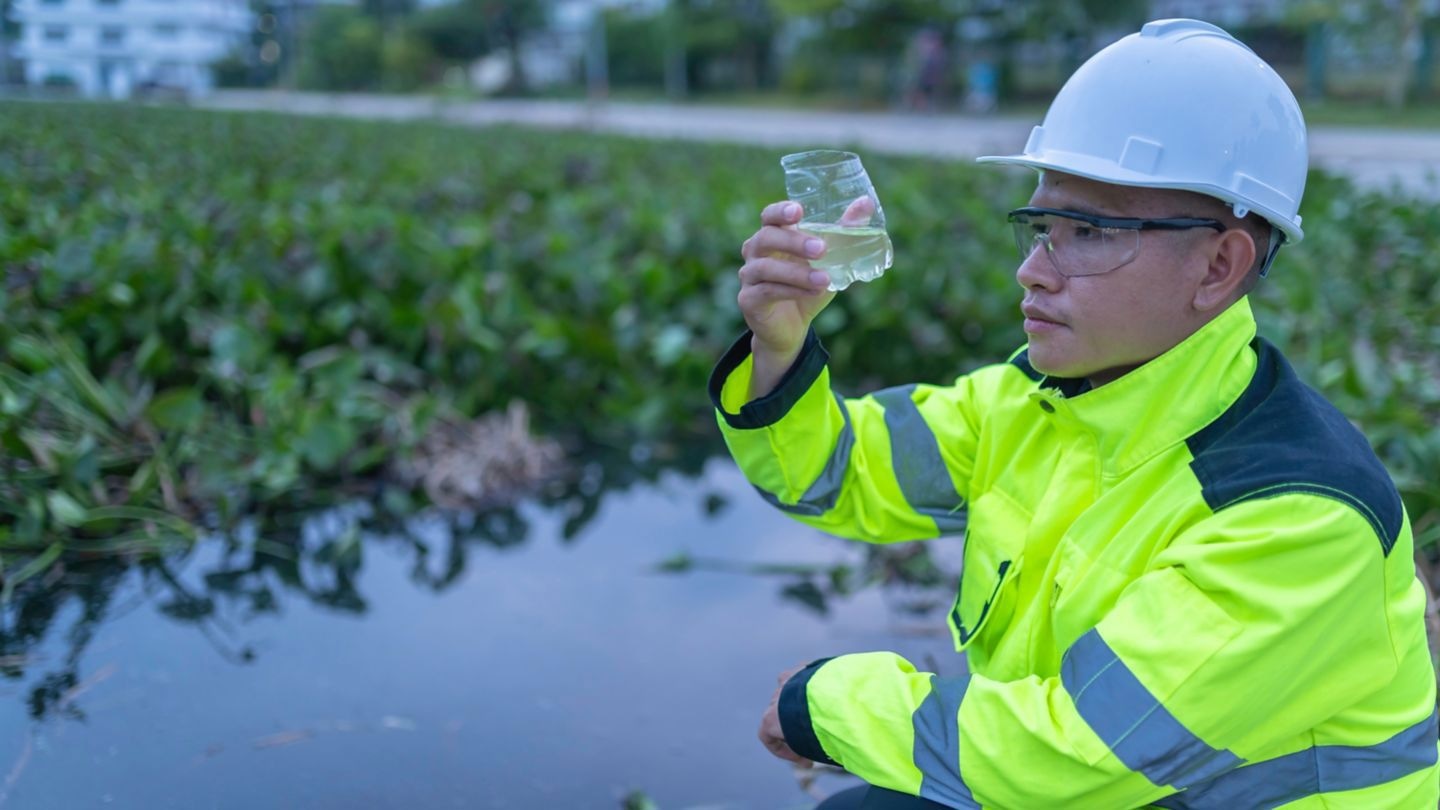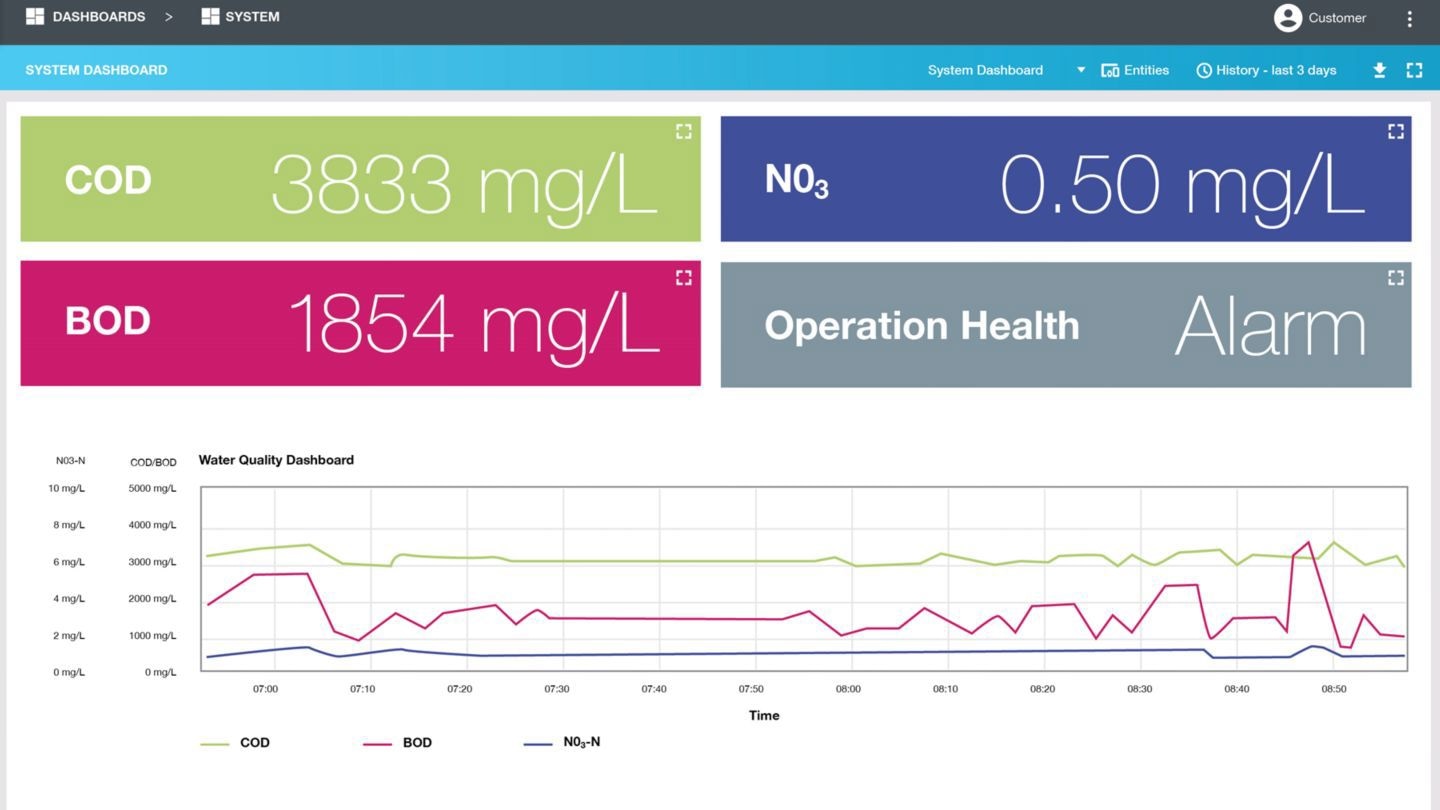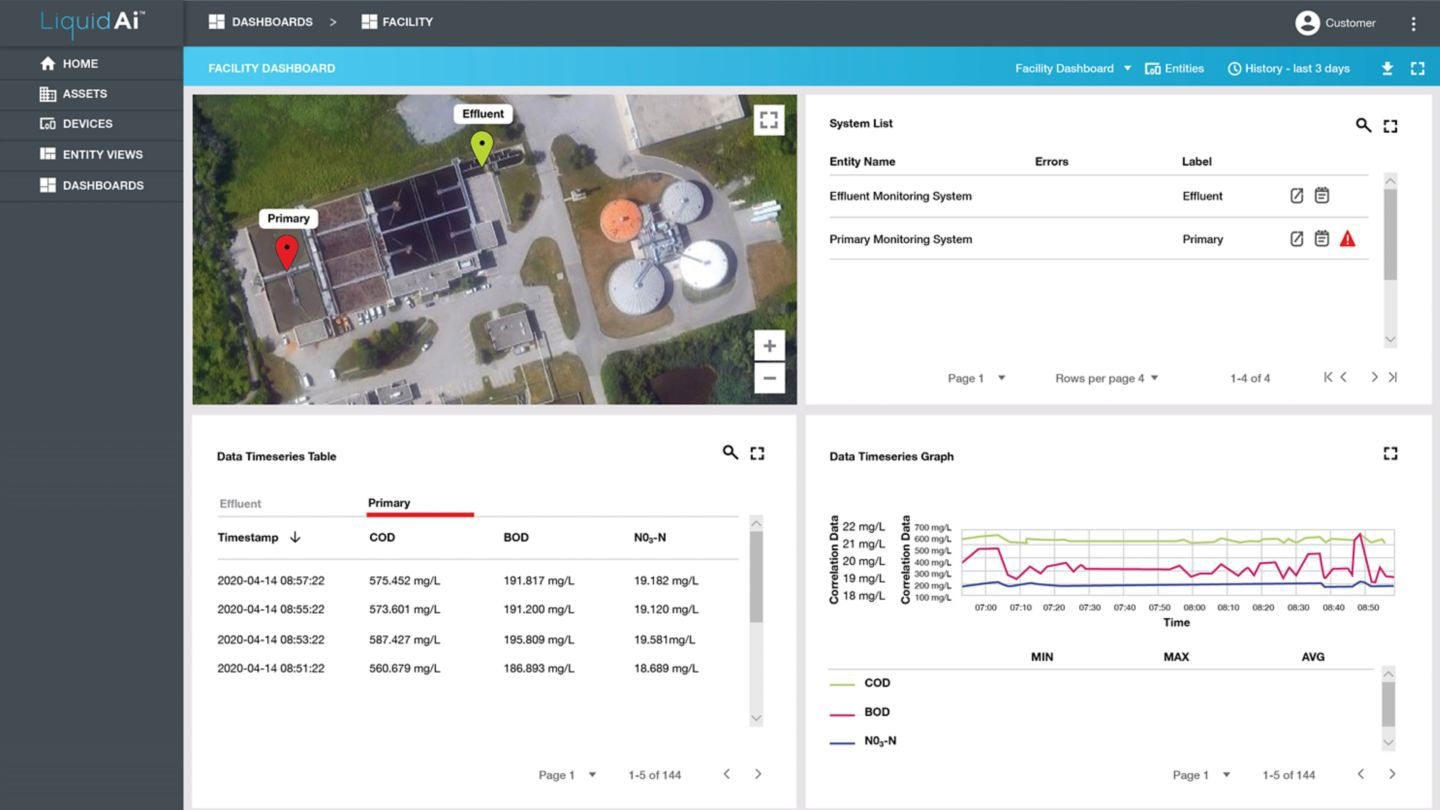Every time we open a tap, we trust the water is safe to use. It is easy to forget that we only enjoy this luxury because of monitoring systems, tirelessly working in the background and warning water companies of every anomaly. Likewise, wastewater also needs to be continuously monitored to avoid pollution.

Image Credit: ABB inc.
How can water networks assure water quality in real time?
One way of monitoring water quality is to regularly collect water samples and send them to a laboratory to be analyzed. Such a test requires several days to complete, meaning problems cannot be detected immediately.
The best way to get faster feedback is to use sensors. In contrast to a laboratory, an optical sensor does not perform a microbiological or wet chemistry test. Rather, it uses some physical property of the water, for example an absorption spectrum to quantify the presence of given elements and molecules. Basically, the way light is absorbed provides a fingerprint of substances in the water. Such sensors typically work in the UV and Vis ranges (ultra-violet and visible light). A special algorithm is used to analyze the light spectrum and provide information about the chemical composition of the water.
In 2024, ABB acquired Real Tech, a company specialized in real-time analysis of water, and with it, Liquid Ai, a service suite for the water industry. Liquid Ai spans the data collection and analysis chain, from the sensors, through data transmission to processing and presentation. Dashboards provide operators with easily readable real-time information on the measurements, as well as providing trends.
Biological and chemical testing
Biochemical oxygen demand (BOD) is a measure of organic waste in water, or more precisely, of the amount of oxygen required for microbial metabolism of organic compounds. What essentially happens is that bacteria feed on the organic material and, in doing so, consume dissolved oxygen. If wastewater being discharged into a river or lake contains too much organic material, this could lead to a depletion of oxygen with serious consequences for the natural ecosystem.
BOD can be determined in a laboratory, but such a microbiological test would normally take five days to complete on account of the time needed for the action of the bacteria. Alternatively, sensors can determine the concentration of organics in the water. The BOD can then be estimated using mathematical models. In other words, a measurement that would take many days in a laboratory can be delivered in real time by ABB’s Liquid Ai data analysis services. Trends or anomalies can be identified instantly and corrective measures taken before damage occurs.
Chemical oxygen demand (COD) is the chemical equivalent of BOD. It is a measure of the amount of oxygen consumed through chemical oxidation of the organic matter.

Liquid AI dashboard with COD and BOD
Image Credit: ABB inc.
Calibration
Rather than relying solely on a starter factory calibration of the sensors, Liquid Ai offers a site-specific calibration service. It compares its own readings to lab results and refines its estimates accordingly.
Trends and dashboards
Besides providing data, Liquid Ai supports water networks through its dashboards, available on numerous devices, including portable devices. These display figures in real time as well as trends. The software also raises awareness of events such as thresholds being crossed, sudden changes in values and unexpected fluctuations. By keeping a vigilant eye on these trends at all time, Liquid Ai supports operators by relieving them of some of the more repetitive aspects of their work, freeing them up for other tasks.

Liquid AI anomaly detection
Image Credit: ABB inc.